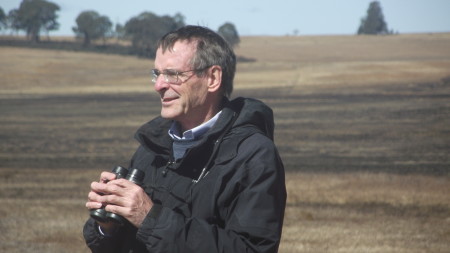Jim Harris, senior vice president at the International Crane Foundation, who is working with the Paulson Institute on a wetlands project at Poyang Lake in Jiangxi Province, speaks about the importance of wetland management and why we should all care about cranes.

There are fifteen species of crane in the world, and most of them are threatened or critically endangered. Why should we care about the survival of cranes?
Because cranes have such significance in many countries around the world, they are a bond that promotes international collaboration and mutual understanding – which is vital if we are to have a livable planet. Cranes are magnificent and have been a prominent part of Chinese culture for millennia – why let them disappear when we don’t need to? It is quite feasible to keep all of China’s cranes with us for generations to come – except the Sarus Crane which has already disappeared from tropical parts of Yunnan. Because of their beauty, size, upright stance – like us! – and cultural meaning, cranes are great flagships for management and restoration of wetlands and waterways that provide vital ecosystem services. Cranes interest people and bring them together to work for something positive, not just combatting negative problems.
What is one key thing China could do to help save cranes?
Most vital is the protection of the wetlands where cranes live – usually involving active management or restoration of ecosystems impacted by human activity. China has established a wetland network of protected areas for cranes, but management has not been sufficient. Wetland protection needs to be science-based, with a strong commitment to research and monitoring as a guide to management. We need research to fill gaps in information such as the ecology of important food plants for cranes and other water birds, and monitoring that can give us feedback on how the ecosystem is doing now and how it responds to management practices. For example, in our project with the Paulson Institute, we are developing management and monitoring plans for sub-lakes within the Poyang Lake Nature Reserve. It is very important that as we adjust water levels or make some slight changes in fishing practices, we actually see what happens as a result — by getting the data from the field. Of the nine sub-lakes, we don’t have good water level data from seven of them. One of our recommendations is to place water gauges in all nine lakes and collect regular water level data.
Central elements of the economy—such as fishing—at Poyang Lake depend on activities that impact the ecosystem. What can China do to balance local environmental needs with the local economy in places like this?
The conflict between cranes and human livelihoods is often due to a lack of understanding of how wetlands function – providing hugely valuable ecosystem services such as flood protection, water purification, biological productivity that results in fish harvests, grazing for livestock as well as habitat for biodiversity and so on – and problems with the management of the wetlands. Part of our project at Poyang Lake has been to monitor the fish and understand the variety of fish and how many and the size harvested from the sub-lakes, so that we can make what we call “adaptive management” recommendations. Adaptive management is where you learn as well as you can what the situation is, implement steps you think will improve the situation, and at the same time you monitor to find out if you’re getting the result you want. You are then able to adapt your actions. To give one example, based on our monitoring so far, we would recommend that the small fish that are caught, which are quite low value, be put back into the sub-lakes. This measure causes little economic loss to the fishermen and would benefit the fish resources – and in the long run increase fish harvests. If we can maintain healthy, productive ecosystems, both wildlife and people benefit.


